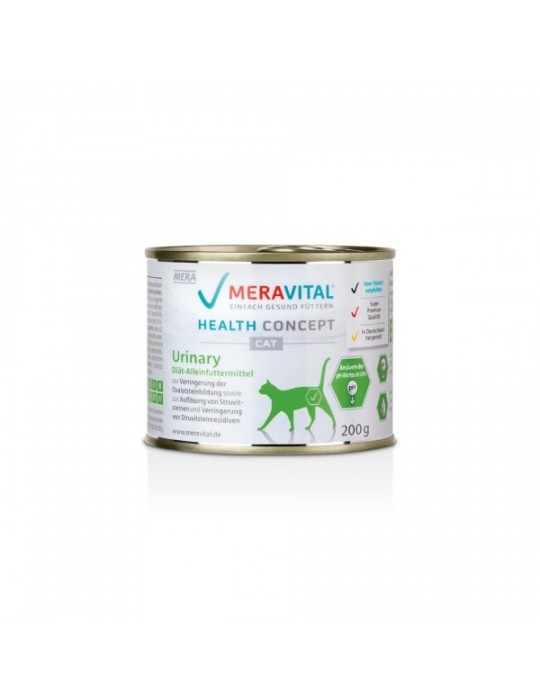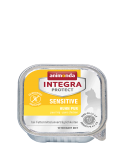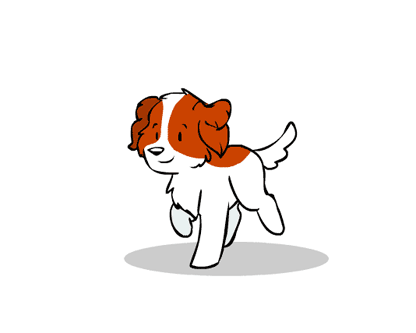Meravital Urinary Wet Cat
Diseases of the urinary organs in cats are summarized under the term FLUTD (Feline Lower Urinary Tract Disease)
FLUTD - the disease of the lower urinary tract - includes, for example, bladder infections, urinary stones, blockages of the urinary tract and many more. Cystitis in cats can have a number of causes. It can be triggered, for example, by urine crystals, malformations of the urinary tract and / or germs as well as emotional stress. As a result, the mucous membrane of the bladder is irritated and a cystitis develops with inflammation products and bleeding. The “mentally” caused FLUTD occurs most frequently. It is also called idiopathic FLUTD. Its exact cause is still unknown to this day. It is believed that affected cats cannot cope with stress adequately. Affected cats have painful urination and pass frequently but only small amounts of urine at a time. Smaller mineral deposits in the urinary bladder are called crystals or semolina. If these take on a larger shape, they are called urinary stones. Different types of urinary stone can be distinguished based on their chemical composition. The most common types in cats include the struvite stone and the calcium oxalate stone. Since cats, like their ancestors, usually only drink little, they only pass small amounts of highly concentrated urine. As a result, the urinary tract is less flushed and the minerals in the urine have a lot of time to accumulate to crystals or even stones. A sick animal often goes to the litter box and often tries to pass urine (even if it is bloody) with pain. It licks its genital region, is apathetic, aggressive and may become unclean. If this is not recognized early, the disease will progress. Then there is a danger to life because the urinary tract clogs and the urine and its "toxins" can no longer be excreted. The bladder can burst and urine enters the abdominal cavity. Hangovers are more likely to suffer from urinary plugs. This is due to the anatomical conditions. The urethra is longer and narrower in some places so that even relatively small stones can more easily lead to a complete occlusion. The causes of this disease are very diverse: obesity, castration, the composition of the feed rich in minerals, an excessively alkaline pH value in the urine, germs, etc. can trigger the disease. Overweight cats exercise less and are often much too lazy to go to the water bowl and litter box.
Lifelong prevention is necessary in affected cats to avoid relapses. Talk to your veterinarian.
How URINARY dry food supports your cat with urinary tract problems
MERAVITAL URINARY is a high premium diet dry food developed by veterinarians and nutritionists that acidifies your cat's urine and thus promotes the dissolution of struvite stones. Since calcium and magnesium are the main components of urinary stones, MERAVITAL URINARY has an undersaturated - but of course needs-covering - content in order to avoid the formation of crystals. Your cat's water intake is stimulated, which means that the minerals in the diluted urine can no longer combine as easily with one another. In addition, the urinary system is flushed regularly and thereby germs and possible "urinary stones" are excreted. Glucosamine and chondroitin sulfate can strengthen the epithelial cells of the bladder mucous membrane, which are often damaged by bladder infections and allow pathogenic germs to adhere.
Veterinary advice:
Frequent urination, pain and apathy can also be signs of other serious illnesses such as kidney problems and diabetes. You should therefore have your cat examined by a veterinarian as soon as possible in order to be able to treat it promptly and in a targeted manner.
60% meat and animal by-products (chicken hearts, chicken livers, chicken stomachs, beef, beef lungs, beef hearts), grain (rice), minerals (sodium chloride, calcium carbonate, potassium chloride), cranberries, oils and fats (salmon oil), molluscs and crustaceans (green-lipped mussel extract = 0.09% glucosamine, 0.03% chondroitin sulfate)
Feeding time: depends on the type of disease. 5-12 weeks are recommended to dissolve existing struvite stones, and a feeding period of up to 6 months is recommended to prevent struvite stones. Energy content (according to FEDIAF, 2014): 480 kJ ME / 100 g.






